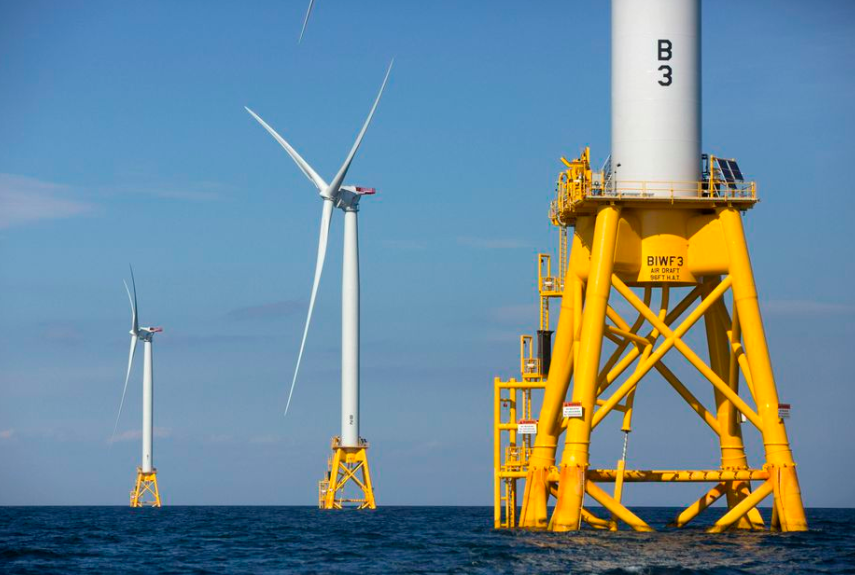
Wind turbines off Rhode Island Photo: Michael Dwyer, Associated Press
Late last week, the State of New York announced it had signed an agreement with Norwegian developer Equinor (in a joint venture with a U.S. firm) to build two massive projects off Long Island that will help the state achieve its plan to generate 70% of its electricity from renewable sources by 2030. Meanwhile, the largest project in development now, Vineyard Wind in Massachusetts, hit permitting snags last week and is pushing to get the project’s federal Environmental Impact Statement (EIS) completed in the next 4-6 weeks — any further delay, according to the Company, will jeopardize the project as it is currently configured.
Why This Matters: Another high profile offshore wind project in the Atlantic, Cape Wind, never got off the ground due to permitting issues. But the State of Massachusetts was clearing the way for the Vineyard Wind project to move forward until locals in on Martha’s Vineyard voted last week to deny an application to lay transmission cables that would pass about a mile east of the Vineyard due to their disturbance of fish habitat. And then the federal government, without explanation, delayed approval of the project’s EIS, causing even further concern. These setbacks could be devastating, which would be a real shame given that New York State’s offshore projects are a few steps farther back in the process. The environmental impacts of building and operating a large industrial site in the ocean are real and need to be mitigated, but the benefits of developing renewable energy are extremely significant overall. It would be a real frustration and something of a perversion of the environmental permitting process if Vineyard Wind fails because of permitting red tape.
Vineyard Wind’s Woes
- The town of Edgartown on Martha’s Vineyard denied the permit to lay cables out of concern that Vineyard Wind had not provided assurances against “adverse effects” from the cables after commercial fishermen questioned at a public hearing last month the company’s plan to mitigate the impacts of laying the cables.
- Ironically, the fishermen in the region know that their ocean waters are warming faster than anywhere else in the Atlantic due to climate change, which may be causing them to be especially concerned about the impacts of the project on their already declining fishing catches.
- Vineyard Wind is appealing to the Massachusetts Department of Environmental Protection to override the Edgartown decision.
New York Goes Big
- The New York Times reports that the NY projects would start operation within the next five years and have the capacity to produce 1,700 megawatts of electricity, accounting for about 20 percent the state’s goal for offshore wind.
- But the state still needs to get through the same permitting and Environmental Impact Statement process as Vineyard Wind.
July 21, 2019 » offshore wind climate change, renewable energy, Vineyard Wind, wind power


